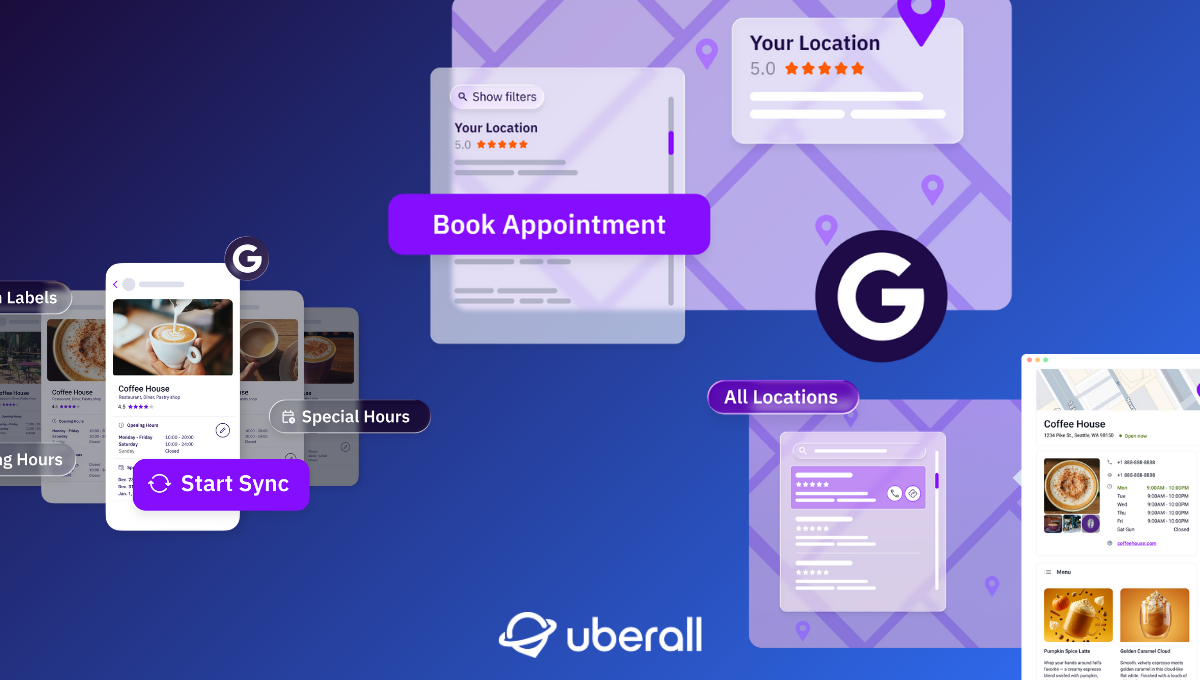
How to Ask Customers for Reviews: A Complete Guide
This guide will show you how to ask for customer reviews, boosting your business’s reputation while staying fully compliant with review platform policies.
Whether it’s building trust or influencing purchase decisions, reviews play a pivotal role in how potential customers perceive your brand. And did you know that 75% of consumers ‘regularly’ or ‘always’ check online reviews before deciding to make a purchase?
Reviews aren’t "nice-to-have" anymore—they’re essential for businesses aiming to succeed in an increasingly competitive market. This guide will show you how to effectively ask for customer reviews, helping you boost your business’s reputation while staying fully compliant with review platform policies.
Why Customer Reviews Matter
Customer reviews act as modern-day word of mouth, but on a much larger scale (and mostly online): when potential customers see real feedback from others, they are more likely to trust your business.
Trust and Credibility
Reviews allow businesses to showcase authentic experiences, helping to validate your product or service in the eyes of future buyers. So a high volume of positive reviews can establish credibility, providing social proof that your business delivers on its promises.
Conversely, a high number of negative reviews may indicate underlying issues with customer satisfaction, quality, or service. No reviews at all, on the other hand, can leave potential customers uncertain about what to expect, making it harder for them to trust your business.
Conversion Rate Boost
It’s no secret that positive reviews can directly impact your bottom line. Among many other studies, Brightlocal’s Consumer Review Survey 2024 shows that consumers are more likely to purchase from a business with favorable reviews. These glowing testimonials can give hesitant buyers the final nudge they need to convert, driving both online and offline sales.
Impact on SEO and Visibility
Reviews don’t just build trust—they can also boost your local SEO rankings, particularly on platforms like Google, that consider reviews a key ranking factor when determining which businesses to display in local search results. Especially positive reviews with relevant keywords and high ratings can help improve your online visibility, putting your business in front of more potential customers.
Getting More Reviews: The Ultimate Word-of-Mouth Strategy
Generating reviews is the most effective way to leverage the power of word of mouth. Every review serves as a personal recommendation, influencing others’ purchasing decisions. However, the challenge lies in how to solicit more positive reviews from happy customers in line with platforms’ policies.
To boost your review generation, focus on creating exceptional customer experiences. Additionally, though, you should consider implementing structured strategies for asking for reviews, ensuring that your request aligns with customer satisfaction.
When to Ask Customers for Reviews
The simplest way to generate reviews is to empower your staff to proactively seek feedback. A friendly prompt during positive interactions, combined with clear instructions on how to leave a review, can make all the difference—though timing is key:
- After a purchase or service is the perfect opportunity to ask for reviews, because the customer has just experienced the product or service, making them more likely to share their thoughts while the experience is fresh.
- After a positive interaction such as when an issue is resolved is an ideal time to ask for feedback, as they now have valuable insights into your business to share with potential future customers.
Whether it’s following a successful purchase or a positive interaction, timing your request carefully will improve the likelihood of getting a favorable response. Moreover, you should make it easy for customers to leave reviews, as a complicated process can cause them to abandon their intention to provide feedback.
Where to Ask Customers for Reviews
Depending on when you ask customers for reviews and how they interacted with you before, you can choose different channels for requesting feedback.
In-Person Requests
For in-store or face-to-face service interactions, don’t shy away from simply asking for a review. Train your staff to ask politely after completing a sale or providing a service. They can also hand out printed materials like cards or flyers that include a QR code leading directly to your review page; or why not simply add it on the receipt for added convenience?
Feedback Stations
Establishing designated areas in-store with tablets or kiosks allows customers to conveniently leave feedback on their experiences. This streamlined approach not only encourages participation but also shows that you value their opinions, making it easier for them to share their thoughts in real time.
Email Requests
A well-crafted follow-up email thanking the customer for their business and politely asking for a review can be very effective; especially when you personalize the message.
- Example Subject Line: “We’d Love Your Feedback on Your Recent Purchase”
- Example Email Body: “Thanks for choosing [Your Business Name]! We hope you had an awesome experience. If you could spare a moment to drop us a quick review, we’d really appreciate it: [Insert Link]. Your feedback helps us get even better for you next time!”
Text Messages
As more and more customers engage with businesses through WhatsApp & Co., messaging apps have become ideal channels for review requests. Keep messages short and to the point, and include a direct link to the review page.
- Example SMS: “Thank you for visiting [Your Business Name]. We’d appreciate it if you could share your experience by leaving a review here: [Insert Link].”
Website Prompts
Incorporating a dedicated section or pop-up on your business website can significantly enhance your review-gathering efforts. This feature can be strategically positioned on high-traffic pages, such as the homepage or after a purchase confirmation, to catch visitors’ attention.
- Example Prompt Headline: “Your Opinion Matters!”
- Example Prompt Text: “We appreciate your visit to [Your Business Name]! Could you spare a minute to share your experience? Your feedback makes a difference!”
Loyalty Programs
Offering points or discounts as rewards for submitting reviews motivates customers to share their experiences while demonstrating that you value their input. By prominently showcasing this incentive within the loyalty program, you can boost customer engagement and create a win-win scenario for both your business and your patrons.
Social Media
Use your social media platforms to invite followers to share their experiences and leave reviews, making it easy by providing direct links to review sites. This approach not only engages your audience but also amplifies your brand's visibility through authentic customer reviews on social media.
How to Ask Customers for Reviews
To streamline the review generation process, many businesses set up automated systems that send review requests following a transaction, using email templates. These systems can be integrated with point-of-sale systems or customer relationship management (CRM) tools to ensure requests go out automatically after key interactions.
Here’s a few things you should always keep in mind though:
#1 Make It Personal
Customers appreciate feeling valued, and a personal touch goes a long way in increasing your chances of getting a review. Whether through a personal message in an email or a conversation at checkout, let customers know their feedback is important to you and your business.
#2 Keep It Simple and Direct
The process of leaving a review should be as easy as possible for the customer. Provide clear, concise instructions on how to leave a review, and minimize the effort required. For instance, including a direct link to your Google Business Profile makes it straightforward for customers to follow through.
#3 Provide Multiple Channels
Everyone has their preferred platforms, so offer customers multiple options for leaving reviews. Whether it’s Google, Yelp, or Facebook, the more choices you provide, the more likely customers will leave feedback.
#4 Ask for Honest Feedback
While positive reviews are great, authenticity is even better. Encouraging honest feedback, even if it’s constructive criticism, shows that your business values transparency and integrity. This builds greater trust with potential customers who value authenticity over perfection.
#5 Incentivize Without Bribing
Offering small incentives like loyalty points can encourage customers to leave reviews, but be sure to comply with the guidelines of review platforms. Most platforms, such as Google, strictly prohibit offering incentives in exchange for positive reviews, soliciting fake reviews, or asking customers to leave only positive feedback.
Violating these guidelines can result in fines, account suspension, or a damaged reputation, so it’s crucial to adhere to their policies to maintain trust and transparency. So better request honest and unbiased reviews from all customers.
Handling Customer Feedback and Reviews
While attracting more reviews is certainly a valuable achievement for any business, it’s equally important to engage with them—both positive and negative, and even neutral feedback.
Responding to Reviews
Responding to all reviews shows that your business values customer feedback. Engaging with customers’ feedback helps improve your reputation and shows that you are committed to delivering excellent service.
Showcasing Positive Reviews
Highlight positive reviews by showcasing them on your website, social media, or marketing materials. Sharing customer success stories and testimonials can further build trust with potential clients.
Dealing with Negative Reviews
Negative reviews happen, and they can be turned into opportunities for improvement. Approach negative reviews with empathy, apologize if necessary, and offer a solution. This not only addresses the issue for the customer but also demonstrates to others that you care about resolving problems.
Review and Reputation Management
While we’ve focused extensively on how to generate and manage reviews, we also want to explore how these elements tie into the bigger picture of reputation management.
Reputation management goes beyond merely collecting and responding to reviews; it encompasses the overall perception of your business in the marketplace. By actively monitoring your brand's presence across various channels, addressing any negative publicity, and cultivating a positive image through strategic communication, you can shape how customers perceive your business.
Ultimately, effective reputation management creates a cohesive narrative that reflects your brand’s values, instilling confidence in current and future clients alike.
Review and Reputation Management with Uberall
Asking for customer reviews doesn’t have to be daunting. With the right timing, personalized requests, and an effective review management strategy, you can collect valuable feedback that will enhance your reputation, improve visibility, and drive more business. And by leveraging tools like Uberall, businesses can streamline the review process and maximize the impact of customer feedback on their success.
Uberall makes it simple: the platform allows you to manage reviews from different channels within one centralized platform.
Businesses like KFC have successfully used Uberall to enhance their review management processes, resulting in greater online visibility, an increase in positive customer feedback, and a 37:1 return on investment. Moreover, the platform seamlessly integrates your review management with local marketing strategies, by bringing together your listings and social media management—plus local pages and locators—in the same place!
Ready to Transform Your Business?
Connect with our partnership team to learn how Uberall can help you achieve similar results. Get a personalized consultation and discover the opportunities waiting for your business.
Resources











